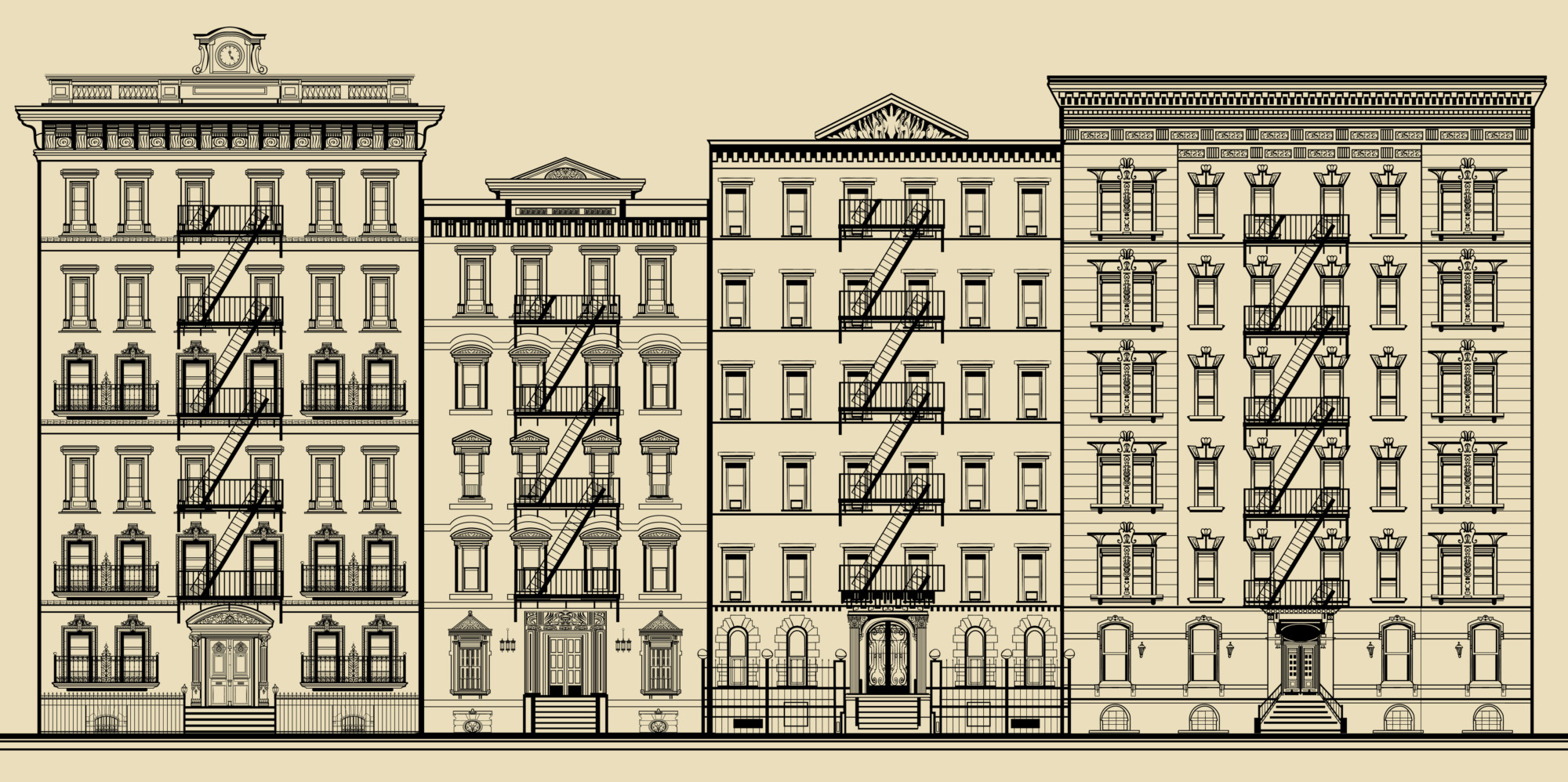Table of Contents Show
Local Law 11, also known as the Façade Inspection Safety Program (FISP), was passed in the wake of several tragedies. It replaced its predecessor, Local Law 10. Both laws were attempts to keep a building’s façade safe to protect pedestrians. Buildings six stories or more are inspected every five years to ensure bricks, concrete, and other parts of the façade do not fall and hurt people.
There are over 12,000 buildings subject to the law. You can inquire about the building’s FISP inspection status as a buyer. We recommend this since it is not hyperbole to state that lives are at stake and there are financial repercussions.
Local Law 11 in New York CityLocal Law 11 in New York City
The city’s legislature passed Local Law 10 in 1980 in response to a college student’s death from falling stonework. This required inspections every five years, with a pass or fail grade. The building had to fix major issues and was inspected again. Then-Mayor Giuliani signed Local Law 11 in 1998 after several incidents. A partial building collapsed the prior year. This tightened up Local Law 10, adding new requirements to correct the deficiencies from previous laws to increase public safety.
A Local Law is passed by the City Council and becomes part of the city’s building code. Then, the Department of Buildings puts in rules to carry it out.
The new requirementsThe new requirements
Previously, the inspector only graded the building as pass or failed based on the front façade and sidewalls of 25 feet from the street. The current law mandates inspecting all four sides.
The new requirements must include a physical inspection of scaffolding, whereas previously, it was just a visual examination using binoculars or a telescope. In addition, the inspector did not have to do an up-close inspection. It also mandates providing three grades. The report must classify the different façade elements as safe, with a repair and maintenance program, or unsafe.
If the inspector deems it safe, there are no issues, and the building is good. Therefore, the building’s board and management do not have to take any action.
Safe With a Repair and Maintenance ProgramSafe With a Repair and Maintenance Program
A Safe With a Repair and Maintenance Program (SWARMP) means it is safe, but the building requires repairs. While technically safe, the board needs to address these issues quickly. The qualified wall inspector must provide a month and year when the repair should occur. If the building does not address these issues, the inspector will push it too unsafe during the next inspection. A structure does not get two consecutive SWARMP ratings. Instead, it becomes either Safe or Unsafe.
A building must address an unsafe classification immediately and have it repaired within 30 days. The building must be protective measures such as a fence or sidewalk shed for public safety. As part of FISP, the new law strictly enforces window air conditioning units with supporting brackets. If a building is without brackets, it would be deemed unsafe.
After the board receives the inspection work, the city mandates the building to complete a report outlining a timetable that provides deadlines for the work. Then, the Department of Buildings sends its inspectors and issues citations, which helps it track the cases and push the building to make the repairs promptly.
Ongoing ViolationsOngoing Violations
Suppose the Department conducts another inspection and finds the building is not addressing the violations adequately, such as not undergoing the necessary repairs, and the unsafe conditions remain. In that case, the building could face the Environmental Control Board, a legal entity that hears the matter. The building owner could also face a penalty of $1,000 per month until the unsafe condition is fixed.
Preventing a dangerous situationPreventing a dangerous situation
FISP requires owners to inspect exterior walls on building six stories or more. Local Law 11 is needed for the city every five years; the building must file a report with the Buildings Department.
A New York State Registered Architect or Licensed Profession Engineer, called a Qualified Wall Inspector, must stay on the site and conduct the inspection. A junior colleague can do some work, but the registered architect or licensed engineer must physically supervise. Previously, under Local Law 10, the professional could sign off on the inspection, passing off the duties to a junior colleague. Then, they file the report with the city.
There are filing deadlines, which are the building’s responsibility. The current inspection cycle started in February 2015 and ran through February 2020. While the building itself has five years between inspections, there are two-year windows, based on the building’s block number; the owner must complete it. These are from February 2015 to February 2017, February 2016 to February 2018, and February 2017 to February 2019.
The inspector must file their report within 60 days. This used to take a lot longer. The board should sign off on the report quickly, even if it means calling a special meeting in the summer. If the building fails to file the report, there is a $1,000 per year penalty and an additional $250 per month late fee.
Why buyers should inquireWhy buyers should inquire
If you are contemplating purchasing a co-op or condo unit in a building subject to FISP, you should know the status. Ideally, the board has a maintenance program, alleviating expenses from potential repairs, including Local Law 11 inspections. A board may not adequately reserve these repairs, requiring a special building assessment on the unit owners/shareholders or increased maintenance/common charges. Your board should plan to deal with the issues, which can become very expensive, and you should inquire about them. This could delay other projects, such as a new roof or community room.
But, the public safety issue is even more critical. You want to make sure your building is safe for everyone, including you and your family.

